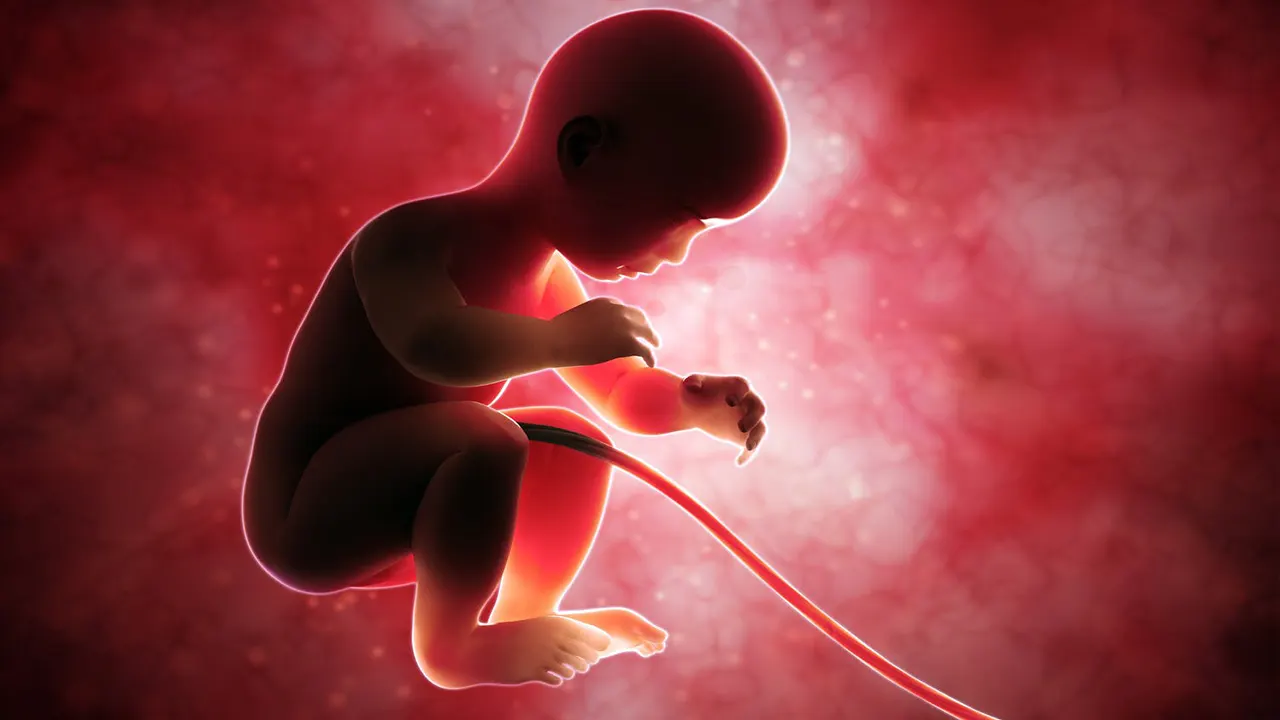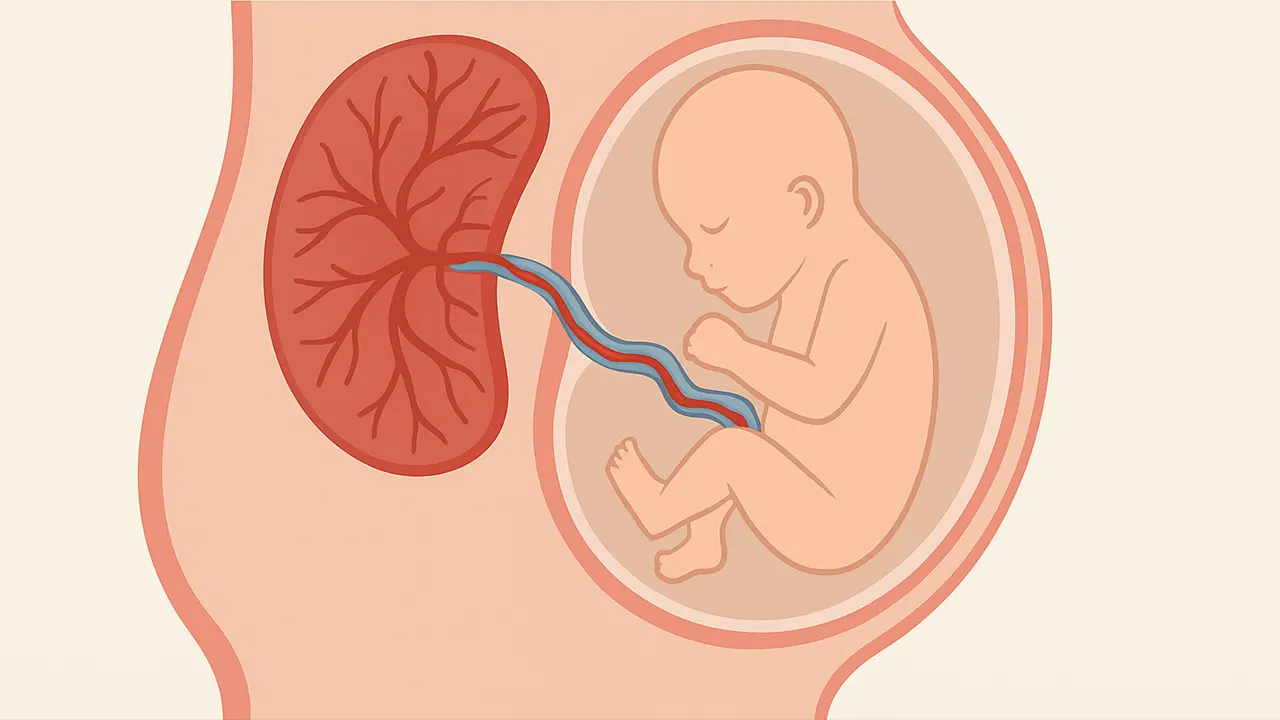Infertility can have many causes, ranging from hormonal disorders to anatomical problems in the reproductive organs. One lesser-known but significant cause is endometrial hyperplasia — a condition in which the lining of the uterus (endometrium) becomes abnormally thick. This thickening is not just a cosmetic change inside the womb; it can disrupt the delicate processes that allow an embryo to implant and grow. In some cases, it may even be a precursor to cancer.
In this article, we will explore:
- What endometrial hyperplasia is
- How it develops
- Its connection to infertility
- Symptoms and diagnosis
- Types and risks
- Treatment approaches
- Prevention and lifestyle measures
1. Understanding the Endometrium
Before diving into the disease itself, it’s important to understand the role of the endometrium in fertility.
The endometrium is the inner lining of the uterus. Its function is highly dynamic and regulated by hormones — primarily estrogen and progesterone.
- First half of the menstrual cycle (follicular phase): Estrogen stimulates the endometrium to thicken in preparation for possible pregnancy.
- After ovulation (luteal phase): Progesterone makes the endometrium more receptive to a fertilized egg by causing structural and biochemical changes.
- If pregnancy does not occur: Hormone levels drop, the endometrium sheds (menstrual bleeding), and the cycle restarts.
When the balance between estrogen and progesterone is disrupted, the endometrium may grow excessively and abnormally — leading to hyperplasia.
2. What Is Endometrial Hyperplasia?
Endometrial hyperplasia is an abnormal overgrowth of the cells in the uterine lining. The main trigger is excessive estrogen stimulation without enough progesterone to counterbalance it.
This imbalance can occur in several situations:
- Anovulatory cycles (when ovulation does not happen, so no progesterone is produced)
- Polycystic ovary syndrome (PCOS) and other hormonal disorders
- Perimenopause and menopause
- Obesity, which increases estrogen production from fat tissue
- Prolonged estrogen therapy without progesterone
3. How Endometrial Hyperplasia Affects Fertility
Infertility occurs when a couple cannot conceive after 12 months of regular, unprotected intercourse. For conception to happen, several steps must align:
- Ovulation must occur, releasing a healthy egg.
- Sperm must reach and fertilize the egg.
- The fertilized egg must travel to the uterus.
- The endometrium must be receptive for implantation.
Endometrial hyperplasia can interfere with step 4 — implantation — and indirectly with ovulation.
3.1 Implantation Problems
An excessively thick and structurally abnormal endometrium can:
- Prevent the embryo from attaching properly
- Alter blood flow to the uterine lining
- Disrupt the release of growth factors necessary for early embryo development
3.2 Hormonal Imbalance
Many women with endometrial hyperplasia also have irregular ovulation (or no ovulation at all), often due to underlying hormonal disorders such as PCOS. This means:
- No egg is released for fertilization
- Progesterone is not produced
- The cycle remains dominated by estrogen, worsening the hyperplasia
3.3 Risk of Miscarriage
Even if implantation occurs, an abnormal endometrium can:
- Fail to support early pregnancy
- Lead to early miscarriage
4. Types of Endometrial Hyperplasia
The World Health Organization (WHO) classifies endometrial hyperplasia based on cell appearance and whether abnormal cells (atypia) are present.
- Simple hyperplasia without atypia
- Mild increase in gland number
- Low risk of progression to cancer (<1%)
- Complex hyperplasia without atypia
- More crowded glands
- Still a low risk of cancer but higher than simple form
- Simple hyperplasia with atypia
- Abnormal cell shapes and sizes
- Higher risk of progression to endometrial carcinoma (up to 30%)
- Complex hyperplasia with atypia
- Many crowded glands with atypical cells
- Very high risk of progression to cancer (up to 40%)
Note: The presence of atypia is the most important predictor of cancer risk and affects treatment decisions.
5. Symptoms and Signs
One challenge with endometrial hyperplasia is that it may not cause noticeable symptoms in its early stages. However, common signs include:
- Abnormal uterine bleeding
- Heavy or prolonged periods
- Short cycles (frequent periods)
- Bleeding between periods
- Postmenopausal bleeding (always abnormal and needs urgent evaluation)
- Menstrual irregularities
- Skipped periods (amenorrhea) followed by heavy bleeding
- Infertility
- Difficulty conceiving due to implantation failure or hormonal imbalance
- Pelvic discomfort (less common)
6. Causes and Risk Factors
While the root cause is unopposed estrogen, several factors increase the likelihood of developing endometrial hyperplasia:
6.1 Hormonal Factors
- PCOS (chronic anovulation)
- Estrogen therapy without progesterone
- Perimenopause (ovulation becomes irregular)
6.2 Metabolic Factors
- Obesity (fat tissue converts androgens into estrogen)
- Type 2 diabetes and insulin resistance
6.3 Reproductive History
- Never being pregnant (nulliparity)
- Early menarche (first period before age 12)
- Late menopause (after age 55)
6.4 Other
- Certain ovarian tumors producing estrogen
- Family history of endometrial or colon cancer (e.g., Lynch syndrome)
7. Diagnosis
If a woman presents with abnormal bleeding or unexplained infertility, a gynecologist may investigate for endometrial hyperplasia.
7.1 Common Diagnostic Tools
- Transvaginal ultrasound
- Measures endometrial thickness
- In premenopausal women, thickness varies; in postmenopausal women, >4–5 mm may be suspicious
- Endometrial biopsy
- Small sample taken from the uterus for microscopic examination
- Gold standard for diagnosis
- Hysteroscopy
- Direct visualization of the uterine cavity with a small camera
- Allows targeted biopsy of suspicious areas
- Dilation and curettage (D&C)
- More extensive sampling, sometimes used if biopsy is inconclusive
8. Treatment Approaches
Treatment depends on:
- Type of hyperplasia
- Presence of atypia
- Desire for future fertility
- Age and general health
8.1 Without Atypia (Fertility-Preserving)
- Progestin therapy
- Pills (medroxyprogesterone acetate)
- Injections (depot medroxyprogesterone)
- Intrauterine device (levonorgestrel IUD) — highly effective
- Weight loss if overweight
- Treat underlying conditions (PCOS, thyroid disorders)
- Regular monitoring with biopsies every 3–6 months
8.2 With Atypia (Fertility-Preserving)
- High-dose progestin therapy may be tried in younger women wanting children
- Close follow-up every 3 months
- If regression is achieved, attempt conception quickly (often with fertility treatments)
8.3 With Atypia (No Fertility Desire or Postmenopausal)
- Hysterectomy (removal of uterus) is usually recommended due to high cancer risk
- Sometimes removal of ovaries as well, depending on age and risk profile
9. Fertility After Treatment
Once hyperplasia is treated and the endometrium returns to normal structure:
- Ovulation induction (if cycles remain irregular) may be necessary
- Assisted reproductive technologies (ART), such as IVF, can be considered
- Success rates depend on:
- Age
- Ovarian reserve
- Duration of infertility
- Whether the underlying hormonal disorder is corrected
10. Prevention and Lifestyle Tips
While not all cases are preventable, risk can be reduced through:
- Healthy weight maintenance
- Reduces estrogen production from fat tissue
- Balanced diet
- Rich in fruits, vegetables, whole grains
- Limit processed foods and sugars to improve insulin sensitivity
- Regular physical activity
- Improves hormone balance and metabolic health
- Treatment of hormonal disorders
- Manage PCOS, thyroid disease, or hyperprolactinemia
- Regular gynecological check-ups
- Especially important for women with irregular cycles or postmenopausal bleeding
11. Prognosis
- Without atypia: Excellent prognosis; most cases resolve with medical therapy.
- With atypia: Higher risk of cancer; prognosis depends on timely diagnosis and treatment.
- For fertility: Many women can conceive after successful treatment, especially if underlying ovulatory problems are addressed.
12. Key Takeaways
- Endometrial hyperplasia is a potentially reversible cause of infertility if detected early.
- It results from prolonged estrogen exposure without progesterone balance.
- Symptoms include abnormal bleeding and irregular cycles; however, infertility may be the first sign.
- Diagnosis is confirmed by endometrial biopsy.
- Treatment focuses on progestin therapy for fertility preservation or surgery when cancer risk is high.
- Lifestyle changes and management of hormonal disorders can prevent recurrence.
13. Quick FAQ
Q1: Can endometrial hyperplasia resolve on its own?
Mild cases without atypia can regress, especially if hormonal balance is restored, but monitoring is essential.
Q2: Is pregnancy possible with untreated hyperplasia?
It’s unlikely and carries a higher miscarriage risk due to poor endometrial receptivity.
Q3: How often should I be checked after treatment?
Typically every 3–6 months for at least a year, or longer if risk factors remain.
Final Words
For women struggling to conceive, especially those with irregular cycles or unexplained infertility, investigating the health of the endometrium is crucial. Endometrial hyperplasia may sound alarming, but with timely diagnosis and appropriate treatment, not only can fertility be restored in many cases, but the risk of progression to cancer can be drastically reduced.


